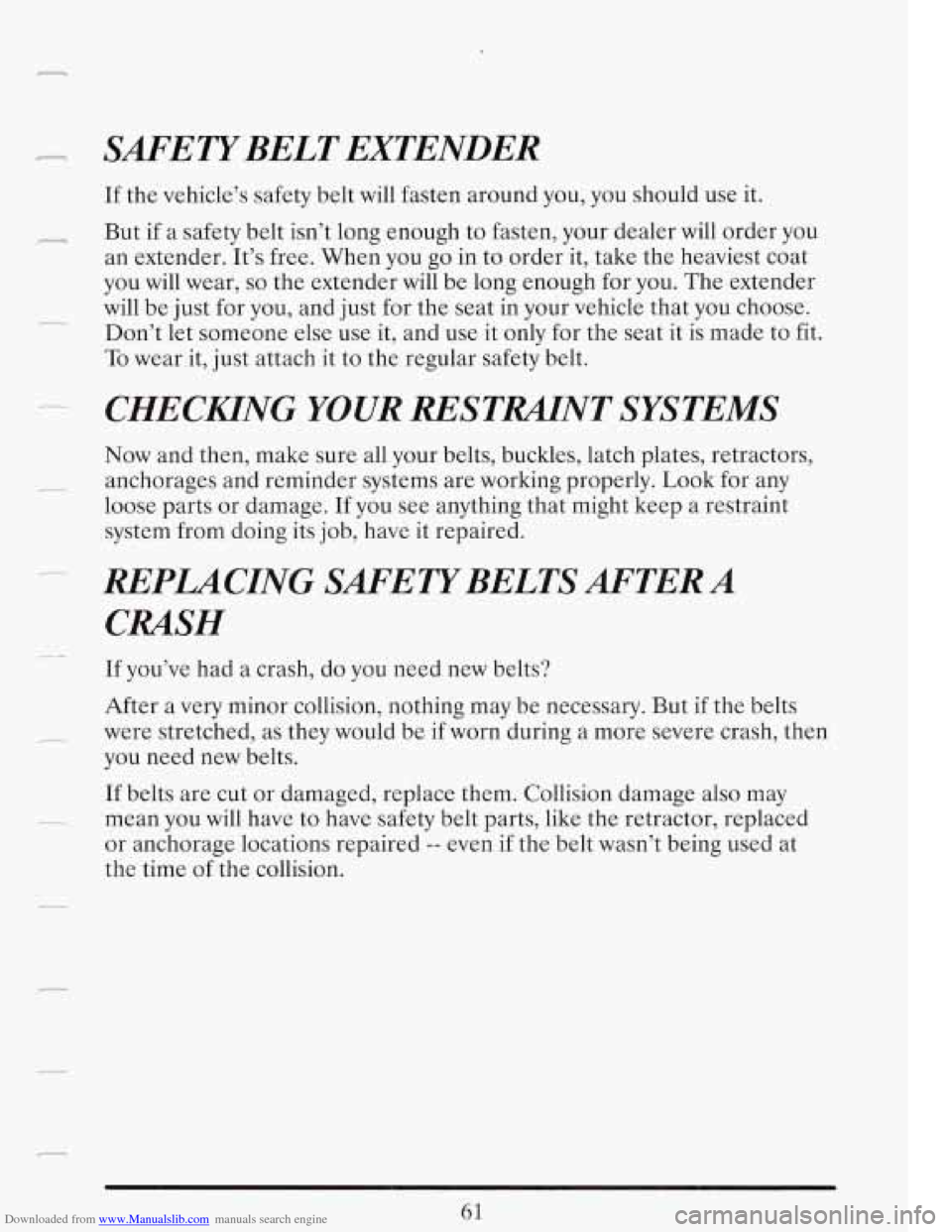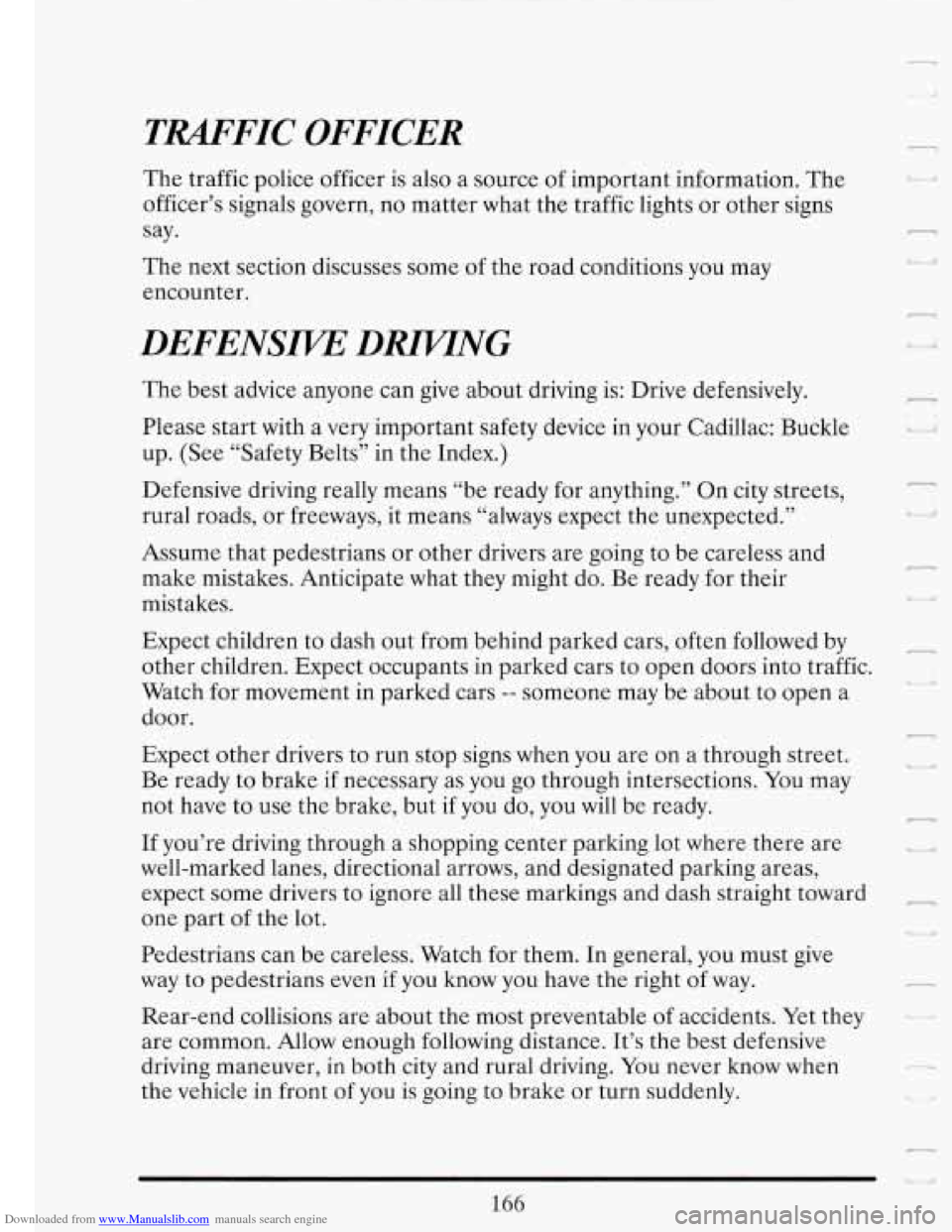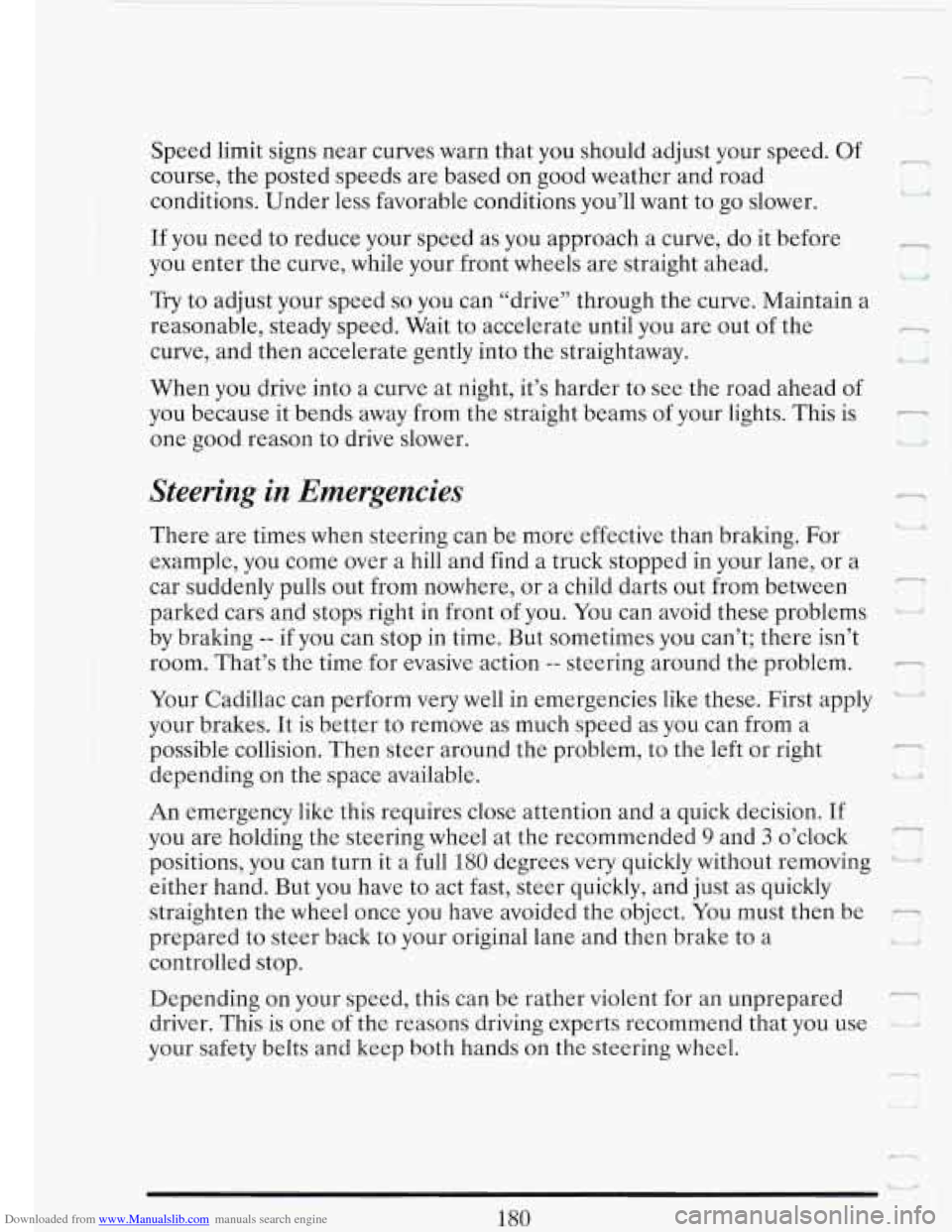Page 71 of 386
Downloaded from www.Manualslib.com manuals search engine r Larger Children
Children who have outgrown child restraints should wear the vehicle’s
safety belts.
If you have the choice, a child should sit next to a window so the child can
wear a lap-shoulder belt and get the additional restraint a shoulder\
belt
can provide.
Accident statistics show that children are safer if they are restrained in
the rear seat. But they need to use the safety belts properly.
57
Page 73 of 386
Downloaded from www.Manualslib.com manuals search engine A CAUTION:
Never do this.
I
Here two children are wearing the same belt. The belt can’t
properly spread the impact forces. In a crash, the
two children
can be crushed together and seriously injured.
A belt must be
used by only one person at
a time.
Q: What if a child is wearing a lap-shoulder belt, but the child is so
small that the shoulder belt is very close to the child’s face or neck?
A: Move the child toward the center of the vehicle, but be sure that the
shoulder belt still is on the child’s shoulder,
so that in a crash the
child’s upper body would have the restraint that belts provide.
If the
child is so small that the shoulder belt is still very close to the child’s
face
or neck, you might want to place the child in the center seat
position, the one that has only a lap belt.
59
Page 74 of 386
Downloaded from www.Manualslib.com manuals search engine A CAUTION:
Never do this.
Here a child is sitting in
a seat that has a lap-shoulder belt, but
the shoulder part
is behind the child. If the child wears the belt
in this way, in a crash the child might slide under the belt. The
belt’s force would then be applied right on the child’s abdomen
That could cause serious or fatal injuries.
Wherever the child sits, the lap portion of the belt should be worn low
and snug on the hips, just touching the child’s thighs. This applies belt
force to the child’s pelvic bones in a crash.
r I L
60
Page 75 of 386

Downloaded from www.Manualslib.com manuals search engine --
SAFETYBELT EXTENDER
If the vehicle’s safety belt will fasten around you, you should use it.
But if a safety belt isn’t long enough to fasten, your dealer will order you
an extender. It’s free. When you go in to order it, take the heaviest coat
you will wear,
so the extender will be long enough for you. The extender
will be just for you, and just for the seat in your vehicle that you choose.
Don’t let someone else use it, and use it only for the seat it is made to fit.
To wear it,
just attach it to the regular safety belt.
CHECKING YOUR RESTMNT SYSTEMS
Now and then, make sure all your belts, buckles, latch plates, retractors,
anchorages and reminder systems are working properly. Look for any
loose parts or damage.
If you see anything that might keep a restraint
system from doing its job, have it repaired.
REPUCING SAFETYBELTSAFTER A
CRASH
If you’ve had a crash, do you need new belts?
After a
very minor collision, nothing may be necessary. But if the belts
were stretched, as they would be if worn during a more severe crash, then
you need new belts.
If belts are cut or damaged, replace them. Collision damage also may
mean you will have to have safety belt parts, like the retractor, replaced
or anchorage locations repaired
-- even if the belt wasn’t being used at
the time of the collision.
Page 76 of 386
Downloaded from www.Manualslib.com manuals search engine -i
Q: What's wrong with this: c
'i 1
A: The belt is torn.
A CAUTION:
Torn or frayed belts may not protect you in a crash. They can
rip apart under impact forces. If a belt
is torn or frayed, get a
I I LCJ
new one right away. I
I I k -.dl
n L
62
Page 180 of 386

Downloaded from www.Manualslib.com manuals search engine TRAFFIC OFFICER 7 .. I: The traffic police officer is also a source of important information. The
officer’s signals govern, no matter what the traffic lights or other signs
say.
The next section discusses some of the road conditions you may
encounter.
DEFENSIVE DlUVTNG
The best advice anyone can give about driving is: Drive defensively.
Please start with a very important safety device
in your Cadillac: Buckle
up. (See “Safety Belts” in the Index.)
Defensive driving really means “be ready for anything.’’ On city streets,
rural roads, or freeways, it means “always expect the unexpected.”
Assume that pedestrians or other drivers are going to be careless and
make mistakes. Anticipate what they might do. Be ready for their
mistakes.
Expect children to dash out from behind parked cars, often followed by
other children. Expect occupants in parked cars to open doors into traffic.
Watch for movement
in parked cars -- someone may be about to open a
door.
Expect other drivers to run stop signs when you are on a through street.
Be ready to brake if necessary as you
go through intersections. You may
not have to use the brake, but
if you do, you will be ready.
If you’re driving through a shopping center parking lot where there are
well-marked lanes, directional arrows, and designated parking areas,
expect some drivers
to ignore all these markings and dash straight toward
one part of the lot.
Pedestrians can be careless. Watch for them. In general, you must give
way to pedestrians even if you know you have the right of way.
Rear-end collisions are about the most preventable of accidents. Yet they
are common. Allow enough following distance.
It’s the best defensive
driving maneuver,
in both city and rural driving. You never know when
the vehicle in front of you is going to brake or turn suddenly.
166
n
U i I‘
n
u
! I,
r
r
d
-
1
Page 194 of 386

Downloaded from www.Manualslib.com manuals search engine c 1
Speed limit signs near curves warn that you should adjust your speed. Of
course, the posted speeds are based on good weather and road
conditions. Under less favorable conditions you’ll want to go slower.
If you need to reduce your speed as you approach a curve, do it before
you enter the curve, while your front wheels are straight ahead.
Try to adjust your speed so you can “drive” through the curve. Maintain a
reasonable, steady speed. Wait to accelerate until you are out of the
curve, and then accelerate gently into the straightaway.
When you drive into a curve at night, it’s harder to see the road ahead of
you because it bends away from the straight beams of your lights. This is
one good reason to drive slower.
n
cz;
n
Steering in Emergencies
There are times when steering can be more effective than braking. For
example, you come over a hill and find a truck stopped in your lane, or a
car suddenly pulls out from nowhere, or a child darts out from between
parked cars and stops right in front
of you. You can avoid these problems
by braking
-- if you can stop in time. But sometimes you can’t; there isn’t
room. That’s the time for evasive action
-- steering around the problem. -
-
Your Cadillac can perform very well in emergencies like these. First apply
your brakes. It is better to remove as much speed as you can from a
possible collision. Then steer around the problem, to the left or right
depending on the space available. I,
An emergency like this requires close attention and a quick decision. If
you are holding the steering wheel at the recommended
9 and 3 o’clock
positions, you can turn it a full
180 degrees very quickly without removing ‘ i’
either hand. But you have to act fast, steer quickly, and just as quickly
straighten the wheel once you have avoided the object. You must then be
-
7
prepared to steer back to your original lane and then brake to a
controlled stop.
Depending on your speed, this can be rather violent for an unprepared
driver. This is one of the reasons driving experts recommend that you use
your safety belts and keep both hands
on the steering wheel.
-1
r P
180
Page 229 of 386
Downloaded from www.Manualslib.com manuals search engine - Maintenance when Trailer Towing
Your vehicle will need service more often when you’re pulling a trailer.
See the Maintenance Schedule for more on this. Things that are
(don’t overfill), engine oil, axle lubricant, belt, cooling system, and brake
adjustment. Each
of these is covered in this manual, and the Index will
__- help you find them quickly. If you’re trailering, it’s a good idea to review
these sections before you start your trip.
Check periodically to see that all hitch nuts and bolts are tight.
rc-.- especially important in trailer operation are automatic transmission fluid
215